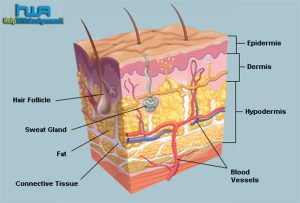- Home
- About Us
- Services
- Online Assignment Help
- Auditing Assignment Help Service
- Nursing Assignment Help
- Excel Assignment Help
- Advanced Economics Homework Help
- XML Assignment Help
- Strategic Management Assignment Help
- Logarithm Assignment Help
- Probability Assignment Help
- Matrices Assignment Help
- Commercial Bank Management
- Thesis Proposal Help
- Corporate Strategy
- Electrical Engineering
- Civil engineering
- Mechanical Engineering
- Electronics Engineering
- Financial Plan Development
- Research Paper
- Political Science Assignment Help
- Operations Management Assignment Help
- Computer Vision Assignment Help
- Commercial Bank Management
- IT Security Assignment Help
- College Essay Help
- Term Paper Help
- Medical Science Assignment Help
- Nursing Thesis Writing Help
- Religion
- Thesis Help
- Supply Chain Management Assignment Help
- Australia Assignment Help
- Cause and Effect Essay
- International Finance Assignment Help
- Statistics Assignment Help
- Computer Science
- Information Technology
- Bioinformatics Assignment Help
- Biostatistics Assignment Help
- Excel Assignment Help
- Taxation
- Research Proposal Help
- SAASU Assignment Help
- Auditing Assignment Help Service
- Workplace Learning in Finance
- Dissertation & Homework Help
- Custom Essay Writing Help
- Online Assignment Help
- Reviews
- Tutors
Skin and Its Functions

Understanding Skin and its functions
Skin
Skin is the largest single organ in the body, which serves three major functions such as, to protect the body in the environment, to regulate the temperature of the body and to transmit information from the environment to the brain. There are numerous protective functions of the skin. Over 70% of the body is composed of water. The water contains a delicate balance of chemical substances in solution. The skin watertight and serves to keep this balanced internal solution intact. The skin also protects the body from the invasion of infectious organisms, bacteria, viruses and fungi. These organisms are everywhere and are routinely found lying on the skin surface and deep in its grooves and glands. However, they never penetrate the skin unless it is broken by injury. Thus, the skin provides a constant protection against outside invaders.
The energy of the body is derived from metabolism or chemical reactions that take place within a very narrow temperature range. If the body temperature is too low, these reactions cannot proceed, metabolism ceases and the body dies. If the temperature becomes too high, the rate of metabolism increases. Dangerously high temperatures producing too high a metabolic rate can result in permanent tissue damage and death.
Functions of the Skin
The major organ for regulation of body temperature is the skin. Blood vessels in the skin constrict when the body is in a cold environment and dilate when the body is in a warm environment. In a cold environment, constriction of the blood vessels shunts the blood away from the skin to decrease the amount of heat radiated from the body surface. When the outside environment is hot, the vessels in the skin dilate, the skin becomes flushed or red and heat radiates from the body surface.
Also, in the hot environment, sweat is secreted to the skin surface from the sweat glands. Evaporation of the sweat requires energy. This energy, as body heat is taken from the body during the evaporation process, which causes the body temperature to fall. Sweating alone will not reduce body temperature, evaporation of the sweat must also occur.
Information from the environment is carried to the brain through a rich supply of sensory nerves that originates in the skin. Nerve endings that lie in the skin are adapted to perceive and transmit information about heat, cold, external pressure, pain and the position of the body in space. The skin thus recognizes any changes in the environment. The skin also reacts to pressure, pain and pleasurable stimuli.
For more details you can visit our websites at https://www.helpwithassignment.com/nursing-assignment-help
To take advantage of our reliable research paper writing service, simply fill out the order form with your requirements. HwA will deliver a well-researched academic paper tailored to your specifications at a fair price while ensuring timely delivery. Our service is known for providing top-scoring, plagiarism-free research papers. Additionally, we offer unlimited revisions and 24/7 customer support as part of our commitment to quality.
So, don’t hesitate—place your order today and receive expert academic assistance instantly!




